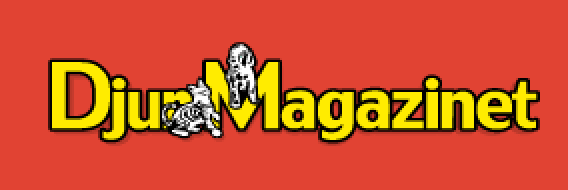Greyhound
FCI:
Greyhound - Group X - Sighthounds, Section 3 - Short-haired sighthounds.
General Appearance:
It's a friendly, fearless, loyal and well-balanced dog. It is usually quite calm, and if the owner has enough understanding for this breed, it is a sweet, obedient, unobtrusive and silent partner. It can, however, be extremely hardy and resistant up unexpectedly. Despite the indisputable gentleness in critical situations it is surprisingly strong. To unfamiliar persons it behaves with distant. It's introverted nature. It is suitable for steeplechase races on the track, the "King of racetracks."
Training/Behaviour:
There are no special problems, but the owner must proceed gently, in all circumstances, quietly, gently and kindly, but utterly consistent. It is therefore important during the upbringing of positive stimuli, e.g. treats - preferably one that it loves. Slavish obedience by this breed, owner cannot accept. This clearly it shows that, despite its gentleness and obedience is not "his Lordship" dog for everyone.
It behaves quite differently at home than in the countryside, and even though it is already quite a long time dog decidedly social, hunting instinct is so deeply encoded, that once it can see deer, it begins chasing it , and even the best manners cannot prevent it from doing . Therefore, when you are walking with this dog, the owner must be cautious and prescient about the leash, where it can meet wild game animals. Although the "hunting" it does not run away, it can make a lot damage e.g. poultry, but also careless cats and small domestic animals.
It is extremely challenging to move, regular long and hearty walks are a necessity even in those cases, if a considerably large garden. For satisfying its motion needs there are ideal long walks that are held reasonably sharp, and if possible, a uniform rate on a leash fixed by leg. There are proving as a daily fitness training for racehorses individuals.
Body:
It's big, powerfully muscled dog of powerful physique, generous proportions and symmetrical shapes, elegant. Due to the short hair is placed extra emphasis on every detail of body building, because even the slightest deficiency is noticeable. Height at withers, male is from 71 to 76 cm and female is from 68 to 71 cm.
The head should be long and moderately broad between the earlobes. Should not be too narrow or too wide, important is the appropriate length and width ratio that was not excessively soft, bland or too coarse, any precious. Generally, by show individuals it is generally nobler than by racing coarser. The skull should be flat from above, the front furrow may be barely noticeable and brow ridges not to be noticeable. Distinctive, protruding cheek bones are undesirable. The frontal slope (stop) should be only slightly indicated, gentle.
The muzzle must be strong, with well-shaped jaws. It requires a perfect, regular and complete scissor bite. Eyes are oval, oblique, observant, intelligent expression. Preference is given to a dark-coloured iris. Ears should be small, delicate, folded backwards.
The neck should be slim, long enough and muscular, elegantly arched in the neck. It flows into the shoulders. Robustness must conform to the body, definitely not be thick or too thin. Arching neck should also not be exaggerated, because then his neck looked like a "duck". The throat must be dry, without a trace of loose skin in the upper half of a rather thin skin underneath performs well apparent trachea.
The course of the topline of the body is very typical, different in individual exhibition and racing. At the exhibition, it is desirable absolutely smooth curve, which indicated slightly behind withers slightly decreases and then again very gently rises to gracefully arched loin. For individuals racing is straighter. The back should be rather long, dry and free of subcutaneous fat, with sharply defined muscles. It has a strong, slightly arched loin. The tail should be long, rather low set, carried down and slightly curved upward.
The chest must be deep, spacious and consists of a properly sprung ribs extending far back. Weaknesses should be clearly rolled up.
The forelegs must be long and straight, solid, sufficiently strong bones. Shoulders should have adequate length and be properly obliquely so clearly delineated their tops pointing upwards and backwards. The upper portions are lying close to the ribs. They must be properly muscled shoulders, however, may not be bulging sides. The elbows should be free moving and must be neither turned in nor out. Pasterns should have the appropriate length should be sufficiently flexible and not in or out.
The hindquarters must be decidedly robust, compact, adequately far apart and wide apart. The thighs should be broad, heavily muscled and at first glance must seem like a powerful source of forward propulsion. Knees should be bent properly. The legs must be broad and muscular. Hocks low to the foundation nor the convergent or divergent. Feet should be compact, with jointed fingers and thickly padded, must not be turned in or out. The forelegs are rounded, called cat with well arched toes and strong claws on the hind shortly have an oval shape.
Leather is very noble individuals with pronounced thin and gives together with a shiny coat stand desirable muscle relief and sharply looming large surface vessels. Hair is soft, dense, with very noble individuals as soon as possible, with minimal undercoat. Individuals from cold regions, accommodation all year round in an outdoor kennel, despite having adequate insulation shed the winter coat is longer and rich undercoat, which at dog show time that is held at the time, it does not make the best impression. Undesirable are also balding areas.
Colouring can be black, white, red, blue, red and yellow, sand, striped or mottled (bicolour) consisting of any of these colours in combination with white. It is s important, especially in light coloured and white individuals, full pigmentation of nose, eye rims, lips and eyes.




